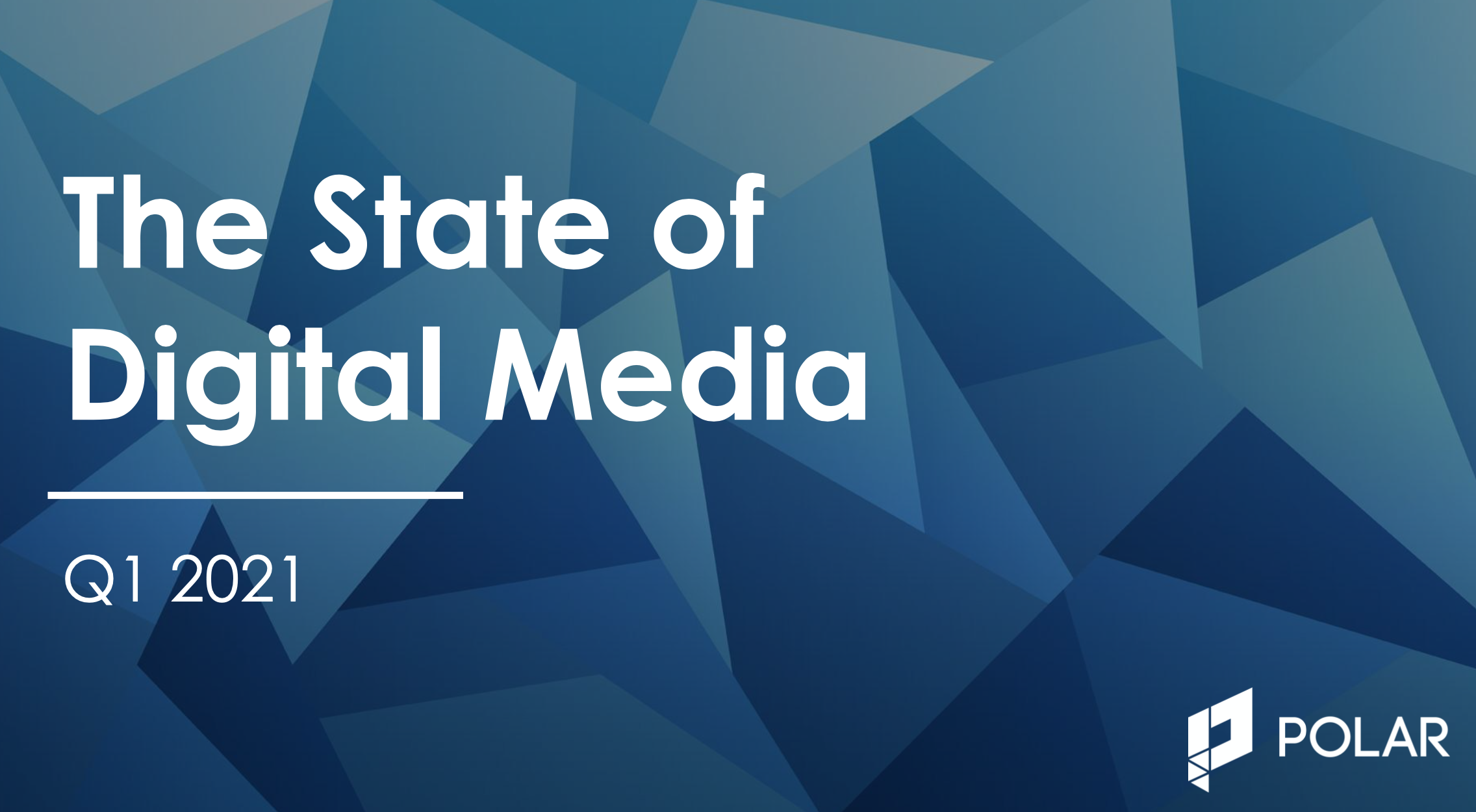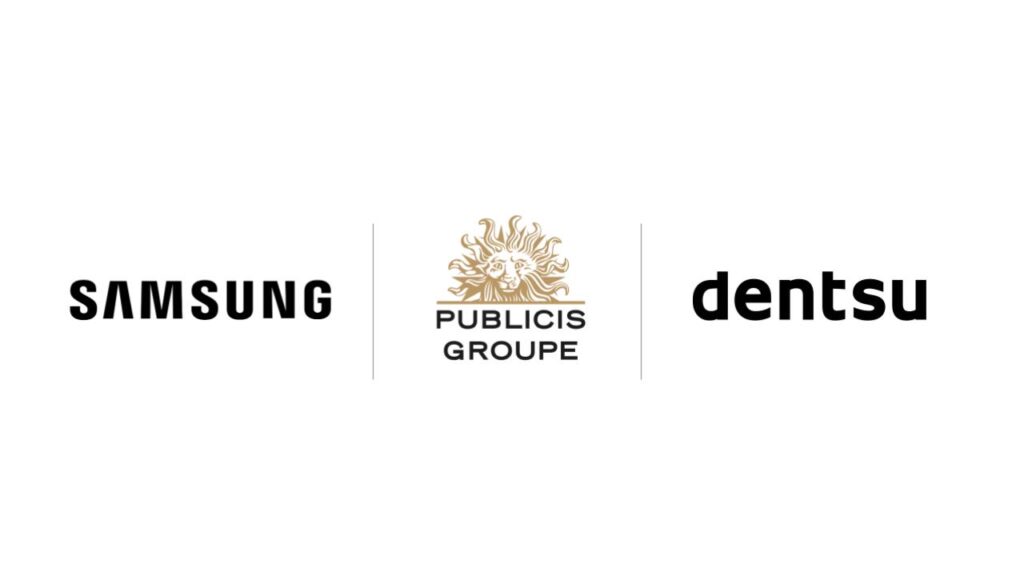As the pandemic continues to ravage our way of life, brands and companies are adapting by shifting ad spend towards new platforms. The old ways of advertising are not effective anymore because the crowd's attention is elsewhere and that's where advertisers need to be. Digital media technology provider Polar, has released a new report that shares insights into ad spend forecasts for 2021 and the trends Polar has currrently got their eyes on.
Ad spend took a direct hit in 2020. When the world went into lockdown last March, many brands and advertisers paused spending and decided to just wait and watch. As the pandemic continued, the spending kept getting paused and budgets began to get slashed. However, in 2021, global ad spend is expected to make a recovery to 5.8% growth. The expected growth for this year will partially be able to recoup the 8.8% drop in total ad spend in 2020.
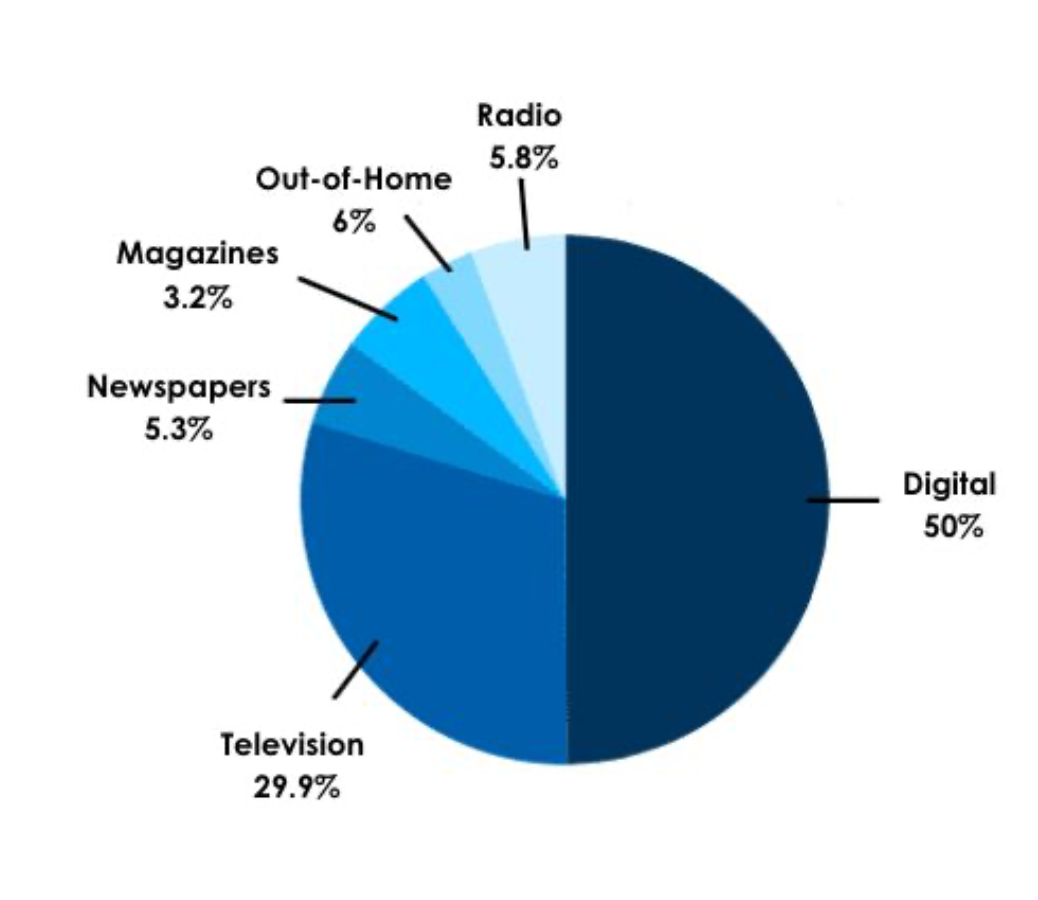
Last year the lockdown brought about new habits in consumers. Many decided to spend most of their time online on either social media apps, streaming platforms or e-commerce sites. As the tenure of the lockdown grew, these practices slowly became habits. Companies and brands were urged to shift to digital in order to get consumer's attention. We're seeing this continue in 2021 as 50% of total ad spend is being dedicated towards digital. Television still manages to stay strong as 29.9% of ad spend is being dedicated towards the medium, despite the entry of some very tough competitive mediums.
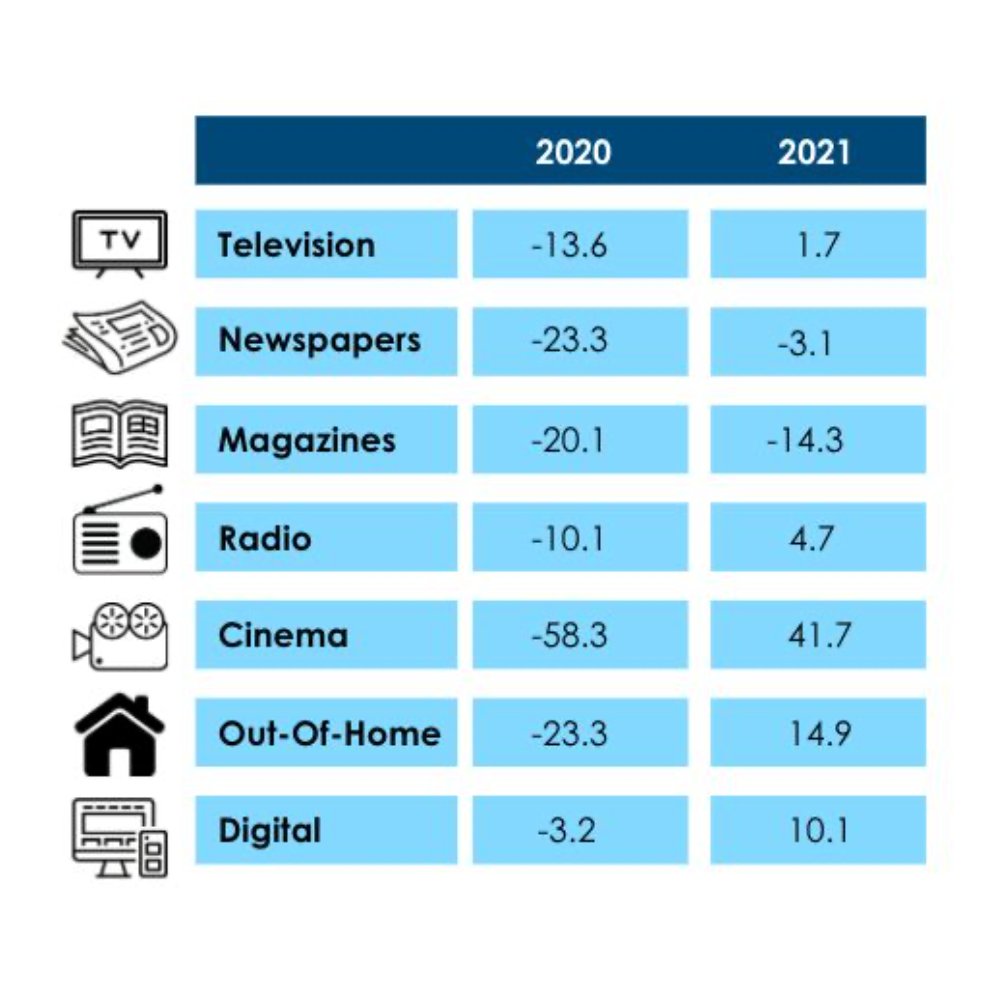 Spend in digital as a whole is expected to grow 10%+ in 2021 compared to last year. Print has been suffering the wrath of digital media for years and dedicated spend towards the medium will continue to decline even in 2021. Mediums such as OOH and Cinema have experienced major volatility in 2020 despite all the technological innovations that were poised for the year and will continue to experience the same volatility in 2021.
Spend in digital as a whole is expected to grow 10%+ in 2021 compared to last year. Print has been suffering the wrath of digital media for years and dedicated spend towards the medium will continue to decline even in 2021. Mediums such as OOH and Cinema have experienced major volatility in 2020 despite all the technological innovations that were poised for the year and will continue to experience the same volatility in 2021.
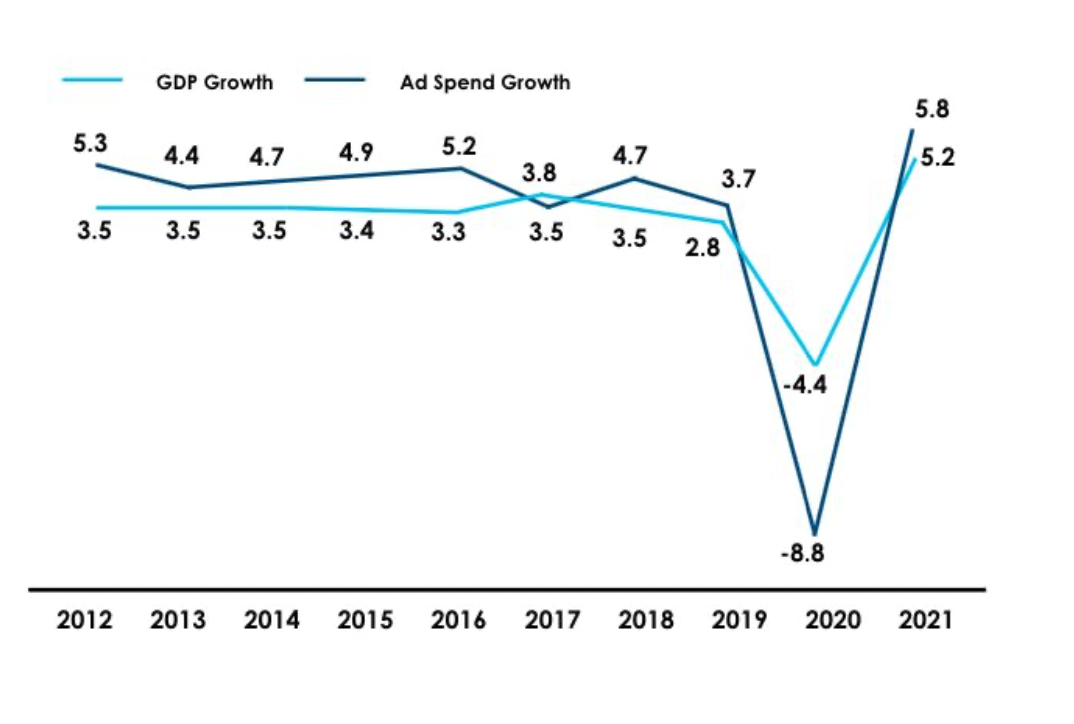
There is a strong correlation between GDP and ad spend growth. Ad spend growth has pretty much been aligned with GDP since the ‘09 recession. The impacts on ad spend in a country have a butterfly effect on the country's ecnonomy. In 2020, while GDP only declined by 4.4%, ad spend declined by 8.8%. Marketeers are expected to slightly outspend expected GDP growth in 2021
Trends to look out for
The Case For Advertising
2020 can be termed as the rise of the subscription economy. With print media in decline, many publications shifted their focus towards digital and decided to build a pay-wall around their content in order to generate revenue. However, one must also realise that there is a limit to the number of digital subscriptions someone (or their employer or school) will pay for and there is also a limit to the number of people (across all socio-economic groups) that can afford digital subscriptions. As the pay-wall trend continues to be adopted by more and more publications, it will eventually lead to only a small handful of people who will have the means to access high-quality, fact-based research-driven journalism.
The Future Of Marketing
2020 was a year of reflection and sobriety for both customers as well as brands. With everything that's happened, customers have finally reached a point where they could no longer tolerate brands that waste their time with marketing gimmicks, annoying and intrusive advertising and purely promotional content. Only quality brands with a relevant message and strong advertising were able to cut through the noise and reach customers.
B2B marketing has also gone through a fundamental transformation. The ease and access of online webinars and virtual events began to outweigh the need to travel for client entertainments, industry conferences, etc.
User Privacy Takes Center Stage
User privacy online has been a longstanding debate. Advertisers continued to persist that they needed enough data in order to serve personalized services to customers. On the other hand, cases such as Cambridge Analytica created a cause for concern for many consumers. It was a Catch 22 situation until Apple stepped in. Apple understood that Google, Facebook and Amazon all depend heavily on detailed user data.Apple has made the invisible visible, expanding the definition of user experience to include privacy and the recent move they made last year is a testament to their commitment to protecting user privacy.
Creative Replaces The Cookie
Third party cookies are expected to vanish next year and the industry is still in a state of uncertainty on figuring out how to navigate a cookie-less world. Ad creative on the web (i.e. banners) has been lackluster for the past 20 years. Now creative will have to work harder for programmatic advertisers, as the effectiveness of audience targeting diminishes by third-party data changes.
Big Retail vs Amazon
Big retailers are coming for a slice of the media spend cake. Walmart, Target, Kroger, CVS and more are all rolling out their own Demand Side Platforms (DSP) to allow brands to activate their first-party shopper and consumer data. They are going beyond becoming a Data Management Platform (DMP), but looking for a bigger piece of the media spend. This is a direct move to stay competitive with Amazon, as Amazon becomes the dominant distribution channel for commerce and commerce-driven advertising.
Who Is Driving This Thing?
According to the report, most advertisers use DSPs as a managed service with only 27% using DSPs exclusively in a self-serve capacity. Only half of Google’s DV360 and The Trade Desk advertisers use them primarily for their self-serve advertising capabilities
Who Do We Trust?
2020 was a peak year for the spread of misinformation online. As a result, consumers have turned to new sources for receiving trustworthy information. Influencers are just as, if not more, influential than traditional media, brands and platforms, because they are specialized, niche and relatable. Earlier, these influencers were platform specific but now we're beginning to see them expand and even become their own media companies. Fueled by platforms like Substack, traditional media influencers are also venturing out on their own now, taking their audiences with them
Small Businesses Need Help
In 2020, many local and small businesses pivoted to the online space, however they will need an immense amount of help with online marketing. The ad tech industry is not equipped to serve the long-tail of advertisers very well, while Google search ads are expensive, leaving limited options other than Facebook.

